Contribution of Hindu spiritual nationalism to India’s freedom struggle
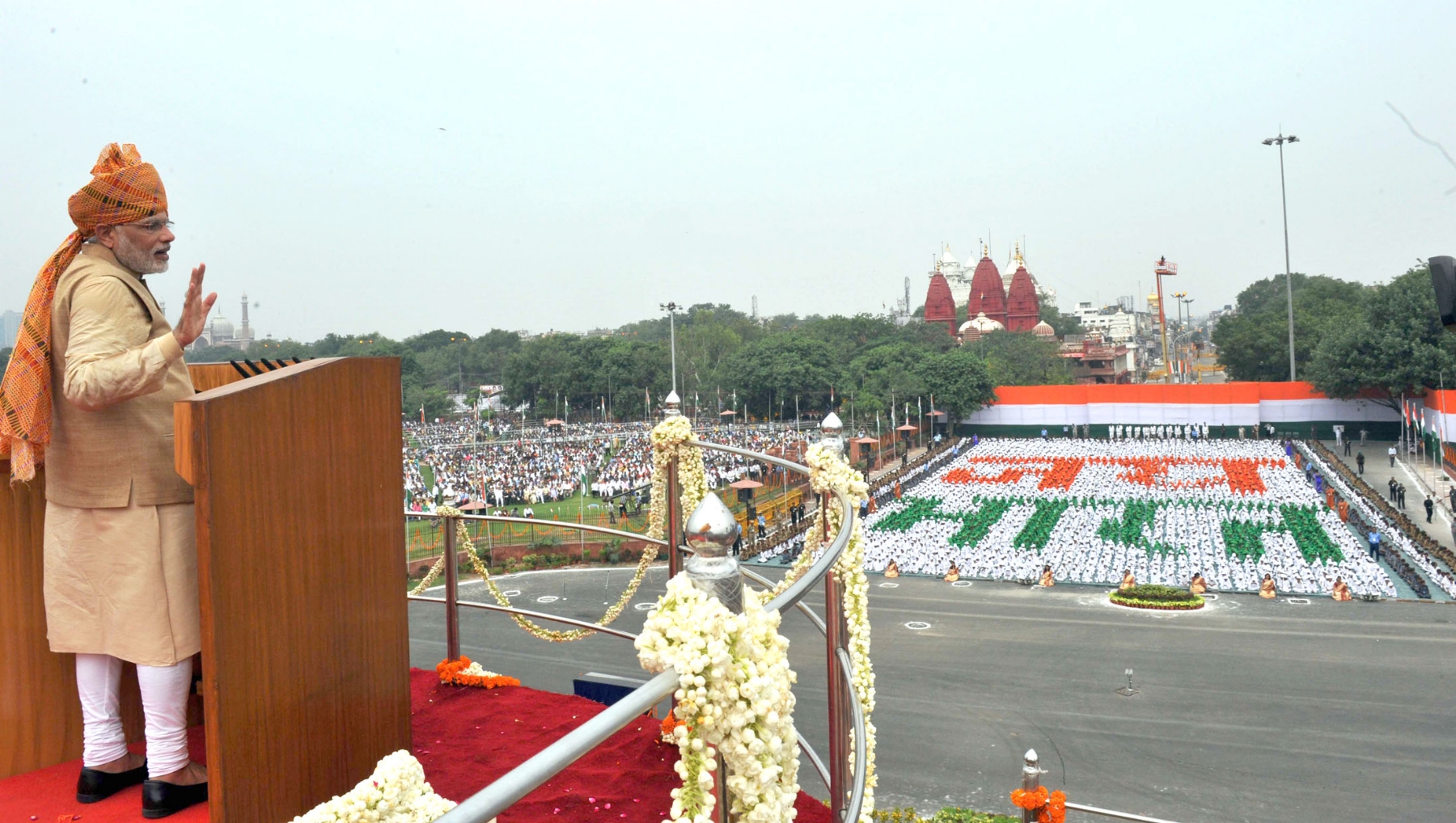
Virag Pachpore
India celebrated 69th Independence Day on this August 15. This was the second consecutive address by the Prime Minister Narendra Modi to the nation for which he has invited suggestions from the common people of this country. The response his appeal evoked was simply stupendous.
It has been the practice on most Independence days to remember the heroes who sacrificed their lives for freeing the motherland from the foreign yoke. Countless men and women, children and elderly persons laid their lives at the altar of the freedom struggle. Because they sacrificed their lives, we are able to breathe in fresh, free air today.
With the battle of Plassy the British East India Company established its rule firmly in India and by 1857 it consolidated itself pretty well. But there was simmering discontent and unrest against their rule which exploded in May 1857 in most organized way. However, the battle was lost but not the war. It continued for another nine decades to achieve freedom on August 15th 1947.
Thousands of revolutionaries, patriots and followers of non-violent movement relentlessly worked for the freedom of the country totally disregarding their personal comforts and pleasures. Their lives were full of devotion and dedication towards the motherland. But this is all now part of the history.
Certain interpretations of the historical past are often taken as gospel truths. In the effort, history is thus tailored to suit and justify these truths. This in turn becomes an authentic chronicle of history for the future generations. Especially, such a tendency is sure to be all the more pronounced when the events are of recent past and leading political personalities have been the part of these events. In this process lopsided presentation of the historical events and distorted or garbled versions of history cannot serve as a source of inspiration for the future generations.
This exactly is what happened with the contribution of Hindu thought and action to the India’s freedom struggle throughout the 150 years of Indian liberation movement.
The bedrock of freedom struggle:
The underlying inspiration of the Indian freedom struggle was the Hindu spiritual thought. India is the only ancient nation of the world and spiritual nationalism has been her forte. It was this spiritual nationalism that has inspired, guided and encouraged thousands of Indians to rise against the foreign aggressors, give a very tough fight and free the motherland. In this struggle the countrymen were united rising above all the differences of castes, religion, language and creed.
Though the Indian attempt to free the motherland in 1857 failed it resulted in two notable developments viz. taking over of the Indian administration by the British Crown from the British East India Company and the establishment of the Indian National Congress under the initiative of Sir A. O. Hume. Till 1893, the Congress remained more or less a forum of the few educated Indians to voice their opinions and express their concerns on various issues.
Rise of Swami Vivekananda:
The dormant feeling of Hindu spiritual nationalism was roused by the ‘Militant Hindoo Monk of India’ Swami Vivekananda. Swami Vivekananda established the supremacy of Hindu spiritual thought at the World Parliament of Religions in 1893 in Chicago with his famous address of September 11.
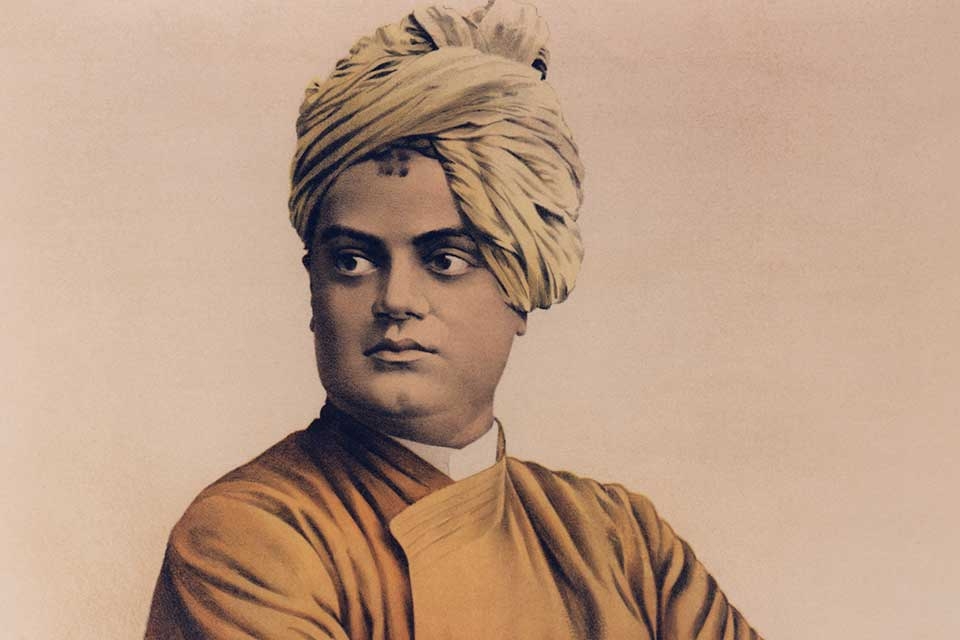 The arousal of this Hindu spiritual nationalism by Swamy Vivekananda provided the much needed platform to the concept of cultural nationalism. The then leadership of Indian National Congress was nationalist to the core and searching for a suitable launch pad to propel the idea of cultural nationalism in the masses. Leaders like Surendra Nath Banerjee, Aurobindo Ghosh, Bipin Chnadra Pal, Lala Lajpat Rai, Lokmanya Tilak, Pt Madan Mohan Malviya and many others had based their movements and programs on this central theme of cultural nationalism which in quintessence was the Hindu spiritual nationalism.
The arousal of this Hindu spiritual nationalism by Swamy Vivekananda provided the much needed platform to the concept of cultural nationalism. The then leadership of Indian National Congress was nationalist to the core and searching for a suitable launch pad to propel the idea of cultural nationalism in the masses. Leaders like Surendra Nath Banerjee, Aurobindo Ghosh, Bipin Chnadra Pal, Lala Lajpat Rai, Lokmanya Tilak, Pt Madan Mohan Malviya and many others had based their movements and programs on this central theme of cultural nationalism which in quintessence was the Hindu spiritual nationalism.
The Tilak Era:
Lokmanya Bal Gangadhar Tilak became an accepted leader of the Congress in 1897and till his death in 1920, the Congress spread its organizational network amongst the masses propagating this Hindu nationalism or cultural nationalism. Even leaders like Bar. M A Jinnah, who later championed the cause of Pakistan, was amongst the frontline followers of Tilak and his Hindu Nationalism. He and many other Muslim leaders were influenced by this positive Hindu nationalism and took pride in calling them as ‘nationalists’ and followers of Tilak!’
The Congress was an all-encompassing forum with loosely knit organizational structure which entertained the leaders of different hues of diverse Indian cultural panorama. One could be a member of the Hindu Mahasabha and active member of the Congress at the same time. There was nothing unusual in that.
During the Tilak era, this Hindu spiritual nationalism formed the bedrock of all the movements—revolutionary or non-violent—in Maharashtra, Punjab, Bengal and Madras Presidencies. The revolutionaries believed in the cult of bomb and pistols and carried Shrimadbhagwadgeeta with them to the gallows. Their firm belief and conviction in Hindu nationalism put the sufficient strength in their spines to face the gallows or to suffer the rigors of Andaman’s Kaala Paani.
- A. Wolpert, in his Tilak and Gokhale (1962) had rightly credited Tilak for rejuvenating this Hindu spiritual nationalism. He mentioned that this Hindu nationalism played an important role in arousing the dormant feeling of freedom and kindled the spark of dedication for freedom amongst the Indian masses.
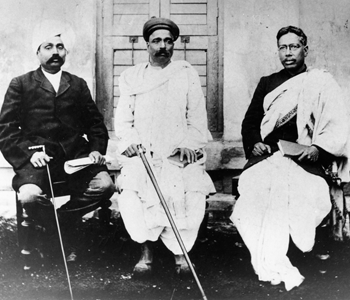
Tilak’s straightforward approach and adherence to equal treatment for all and appeasement to none, earned him followers like Jinnah and Ali brothers. Jinnah accepted the membership of Home Rule League started by Dr Annie Besant. In 1913 Karachi Congress session Nawab Sayyed Mehamod Bahadur appealed to all to join the freedom struggle under the leadership of Lokmanya Tilak.
The Partition of Bengal:
In 1905 Viceroy Lord Curzon’s announcement of partition of Bengal into Hindu majority and Muslim majority regions angered the Indian masses. This provided an opportunity to the famous ‘Lal-Bal-Pal’ trio of the Congress to strengthen the basis of cultural nationalism. Lokmanya Tilak in Maharashtra, Bipin Chandra Pal in Bengal and Lala Lajpatrai in Punjab consolidated the militants within the Congress and succeeded in getting the resolution adopted in Kolkata Congress session of December 1906 condemning the move to vivisect Bengal on the basis of faith.
That marked the beginning of the battle for supremacy of leadership within the Congress between the moderates led by Gopal Krishna Gokhale and militants led by ‘Lal-Bal-Pal’ trio. They clashed in 1907 Surat and 1916 Lucknow Congress sessions on this issue.
The Home Rule League:
Annie Besant founded the Home Rule League in 1915 in Madras and Tilak joined her by starting its Pune branch in the following year. This league too had the Hindu spiritual nationalism as its foundation. Annie Besant herself was a very staunch supporter of Hindutva ideology and built her Home Rule League on that unshakable edifice. She considered India and Hindu as inseparable.
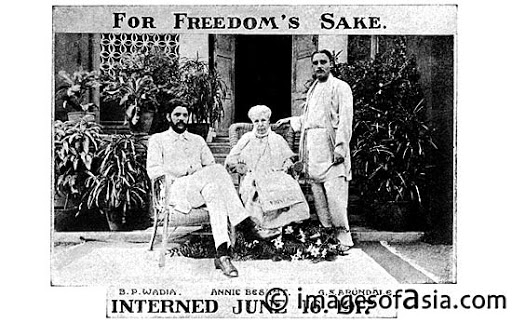 The best gift of Tilak era to our nation was a leader in Vinayak Damodar Sawarkar, a revolutionary leader who challenged the British in their own land. With his tremendous and extra-ordinary organizational skills and capabilities, Sawarkar built, guided and inspired the revolutionary movement from India House in London. The aim of course was to free Mother India from the British yoke.
The best gift of Tilak era to our nation was a leader in Vinayak Damodar Sawarkar, a revolutionary leader who challenged the British in their own land. With his tremendous and extra-ordinary organizational skills and capabilities, Sawarkar built, guided and inspired the revolutionary movement from India House in London. The aim of course was to free Mother India from the British yoke.
However, Sawarkar was arrested in 1910 and was sentenced to two consecutive life terms. He was sent to Andamans to serve the imprisonment but later was released in 1921 but put under house arrest in Ratnagiri till 1937. This period he utilized to unite the Hindu society by eliminating all the differences of caste, religion and the curse of untouchability before he plunged into the political arena.
Beginning of Gandhi era:
Lokmanya Bal Gangadhar Tilak passed away in 1920. By that time a new leader appeared on the Indian horizon who would ultimately lead the country to freedom. He was Mohandas Karamchand Gandhi. With Gandhi’s entry into Congress and Tilak’s passing away, there was a paradigm shift in the approach of the Congress towards freedom struggle. This struggle would now be more moderate, peaceful and non-violent. Gandhi introduced the new powerful leaven into the maelstrom of ideas, impulses and images having many elements congenial to the spirit of Hindu spiritual thought and culture. The Hindu spirit dormant in the educated classes rose to the surface and hailed Gandhi as Mahatma representing the ancient Hindu spiritual lineage. Thus, the freedom movement under Gandhi too drew its sustenance from the Hindu cultural heritage, ideas and ethos.
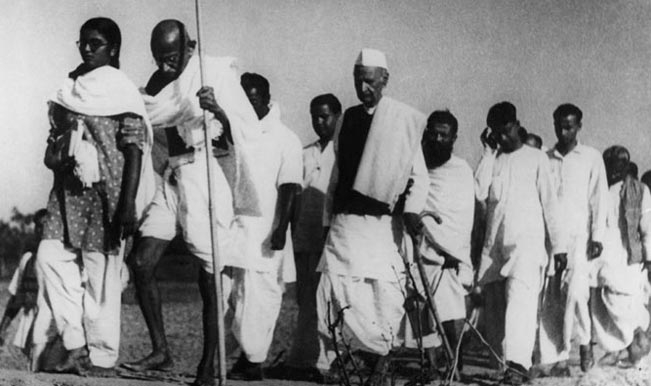
However, with the domination of political motif in the Gandhian movement the cultural forces it initially involved and mobilized were rendered ineffective. Gandhi attached too much significance and propriety to Hindu-Muslim unity as pre-condition to Swaraj. To achieve this he crossed all limits of appeasement of Muslims in India. His preoccupation with Muslim appeasement accounted for the failure of his movement to achieve the realization of spiritual nationalism and heritage of India.
The mischievous game of the British:
The game played by the wily British rulers was also responsible to this failure to a great extent. They systematically conditioned the mindset of the Congress leadership by repeatedly emphasizing that India was never one nation but a conglomeration of different nationalities and ethnic groups. They distorted the history and tailored it to suit their conspiracy design. They made the Congress leaders, especially Gandhi-Nehru duo to believe that Swaraj could be achieved only after the unity between Hindus and Muslims. On the other hand they encouraged the Muslims to demand a separate electorate for them. They impressed on their minds that they were the rulers of this vast land and it was from them the British had inherited the occupation of India.
This mischievous propaganda by the British compelled Gandhi to support the Khilafat Movement which had nothing to do with the Indian freedom movement even by remotest concern. Gandhi sincerely tried all the ways, means and ideas to win over the confidence of Muslims in India but could not do so as he finally confessed on December 24, 1947, more than a month before his assassination that he had failed miserably in his mission to achieve Hindu-Muslim unity. His experiments only increased the appetite of the Muslims community which ultimately resulted in vivisection of our Motherland and a fractured independence.
Ill-effects of Muslim appeasement:
This constant appeasement of Muslim by Gandhi in spite of the opposition from within the Congress, developed an inferiority complex in ranks and files of the Congress party. This degeneration which started in 1919 and continued till the late 1930s, was so devastating that the Congress leaders were far ahead in denouncing and insulting the Hindu thoughts, ethos and cultural heritage of India. “Call me a donkey, but don’t call me a Hindu”, was a common attitude of the average Congressman and average Hindu.
Negation of ‘Vande Mataram’, tacit support to cow slaughter, glorifying the killers of Swami Shraddhananda, and deliberate underestimation of Mopallah uprising against the Hindus of Kerala exhibited different shades of Muslim appeasement initiated by the Congress under Mahatma Gandhi’s leadership. This only resulted in whetting the appetite of the Muslims alienating the non-Congress Hindu initiative for freedom.
Gandhi’s charismatic influence:
Mahatma Gandhi had a charismatic influence on Indian mind. His leadership was so influential that the leaders who believed in Hindu spiritual nationalism could not find any outlet to assert them. They remained with the Congress but were rendered voiceless in matters of political and social importance. They were like toothless tigers. The Congress under Mahatma did not allow any prominence to these leaders in organizational matters. Attempts were made to keep these leaders away from any influential position in the party organization. Thus, leaders like Rajendra Prasad, Purushottam Das Tandon, Lala Lajapat Rai, Pt. Madan Mohan Malaviya, C R Das, C Rajgopalachari remained mute spectators to the policy of appeasement and its ill-effects on the national polity and social psyche.
Revival of Hindu Mahasabha:
Disillusioned and disgusted by this policy of Muslim appeasement followed by Mahatma Gandhi and Congress under him, leaders like Dr B S Munje, Veer Sawarkar, and others consolidated the Hindu Mahasabha to organize Hindu society. But in doing so, they perceived the Hindus to be only ‘political entity’. Thus, Hindu Mahasabha emerged as anti-thesis of Gandhi’s Muslim appeasement policy making it a Hindu counterpart of the violent and rabidly communalist Muslim League.
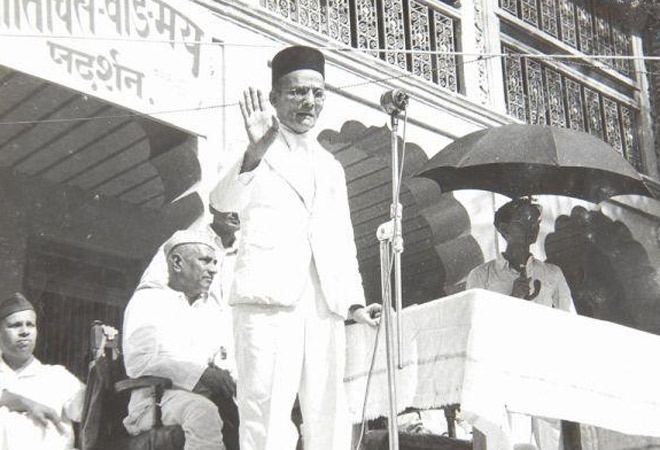 Sawarkar, after his release from house arrest in Ratnagiri around 1937, began taking part in Hindu Mahasabha. He also launched a social integration movement against the curse of untouchability prevalent then in the Hindu society. Later on he emerged the leader of Hindu Mahasabha but could not spread the organizational network to emerge as an effective socio-political alternative to take on the Congress and its leadership. The reactionary nature of the Hindu Mahasabha did not earn it the popular support and people on the whole rejected its policies and programs.
Sawarkar, after his release from house arrest in Ratnagiri around 1937, began taking part in Hindu Mahasabha. He also launched a social integration movement against the curse of untouchability prevalent then in the Hindu society. Later on he emerged the leader of Hindu Mahasabha but could not spread the organizational network to emerge as an effective socio-political alternative to take on the Congress and its leadership. The reactionary nature of the Hindu Mahasabha did not earn it the popular support and people on the whole rejected its policies and programs.
Dr Hedgewar and RSS:
There was another attempt to consolidate the Hindu society and strengthen the Hindu spiritual nationalism in India. This was an attempt to organize the Hindu society on the pure national sentiments. Dr Keshav Baliram Hedgewar, whose 125th birth anniversary year is currently underway, founded the Rashtriya Swayamsevak Sangh (RSS) which today has come to dominate the socio-political scenario in India. Hedgewar came in contact with revolutionaries while he was in Kolkata to study medicine. He became an integral part of the revolutionary organization Anusheelan Samiti by gaining entry into it inner group. After he returned from Kolkata to Nagpur, Hedgewar plunged into Congress movement and programs.
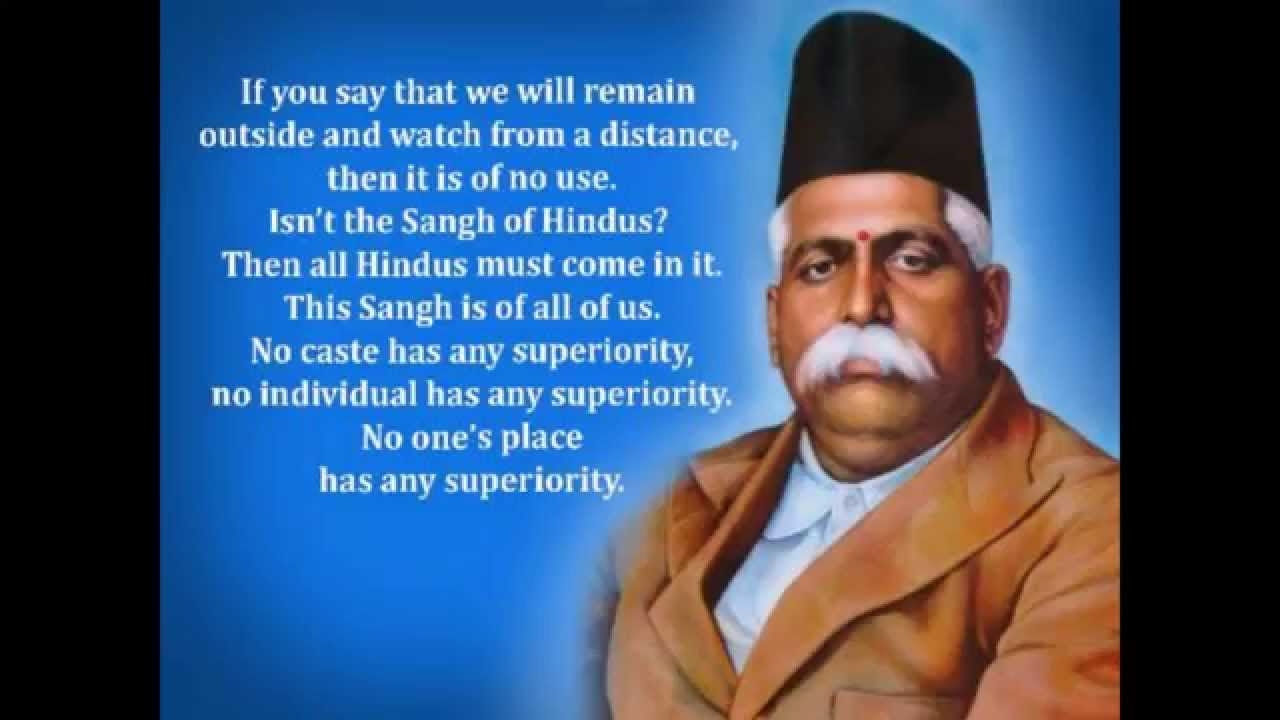
Dr Hedgewar was arrested for his fiery speeches and served two imprisonments for participating in non-cooperation movement and jungle satyagraha. But he became weary of the appeasement policy of the Mahatma and Congress towards the Muslims. He believed that Hindus are the real owners of this land and because they were divided the foreigners came and established their rule over them. Thus, to rectify this, organizing Hindus eliminating all their internal differences of caste, creed, color, language and states, was the only remedy, Dr Hedgewar thought and thus founded the RSS in 1925 in Nagpur. But he was a active member of the Congress and even participated in the jungle satyagarha in 1930 along with many RSS activists.
The founder of RSS understood the scope and limitations and utility of politics. Therefore, he built this organization purely on the cultural ethos and life values. When Dr Shayma Prasad Mukherjee came to seek his help in raising a political organization of Hindus, Dr Hedgewar told him in most clear words that “Sangh does not take part in day-to-day politics”. Nation was the top priority of RSS.
But he never stopped any RSS activist from joining political movement of his choice and participating in the freedom struggle. In that he clearly made a separating line, though a thin one, that demarcated non-participation of RSS and participation of its members in various societal struggles and agitations in their individual capacity as sensitive citizens keenly aware of their responsibilities and duties towards the society and the motherland. However, this thin line of demarcation seems to have been either ignored or not understood in its proper perspective in the later days for which the RSS continued to receive blame despite of its growing strength and influence. Even in the present era, though the RSS has occupied a pivotal position in the country, it still continues to be the popular whipping boy of the forces representing so-called secular and mainstream media and politicians.
The Congress strategy:
The revival of Hindu spiritual nationalism on the Indian political horizon compelled the Congress leadership to devise a strategy to save its own base from getting eroded. Behind this thinking there could be a fear of getting overpowered by the organized force vis-à-vis the loose organizational structure of the Congress. The Congress leaders also could have fears about allowing entry to the Hindu forces which would have alienated the Muslims. As Hindu-Muslim unity was a precondition to freedom, the Congress thought it wise to keep the Hindu elements at bay. Perhaps, the Congress leaders then did not have clear perception about the strength of the consolidated Hindu forces.
This neglect of emerging Hindu spiritual nationalism by the Congress resulted in refusing the legitimate locus standii to the Hindu organizations in the freedom struggle. Still, they participated in the 1942 Quit India movement and saved thousands of Hindus and Muslims in the violent maelstrom of partition in 1947 risking their own lives.
The backward sections and Hindu nationalism:
The major section of the Hindu society that continued to fight for its honorable existence in the independent India was the so-called backward and depressed classes of the Hindu society. Dr Babasaheb Ambedkar had emerged their leader then. But the unsympathetic attitude of the society, especially of the Congress leaders towards all that Dr AMbedkar did and asked for, justify the fears expressed by these backward classes. Ambedkar continued to consolidate the social position of this section even by staying away from the freedom movement. Demand for separate electorate for the depressed classes stemmed from this frustration. Gandhi, on his part, failed to incorporate this strength of the depressed classes consolidated by Dr Ambedkar, despite his movement against untouchability.
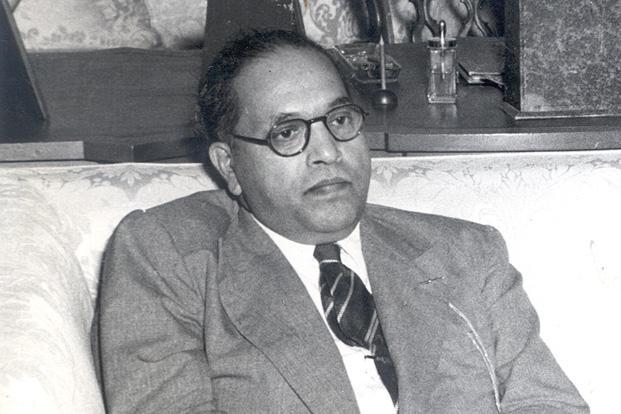
Similarly, another very important section of the Hindu society, who dwelt in the forests and hills, and put up a brave fight against the British rulers from time to time, was ignored by the Congress leadership. There were organized uprisings by Jadonang and Rani Guidinliu in the Naga Hills, Piyali Phukan and Maniram Dewan in Assam, Birsa Munda in Jharkhand, Tantya Bhill and others who organized the forest dwellers against the British and put up a brave fight for freeing their territory from the foreign yoke. Due recognition to their efforts could have earned the much needed cooperation from this segment of the Hindu society in post-independence national reconstruction mission. But the Congress not only failed to recognize their role, but allowed them to fend for themselves against the onslaught on their identity, culture and traditions by the Christian missionaries.
The destiny of the nation would have taken a very positive and firm direction in future had the Congress succeeded in recognizing the contribution of the Hindu cultural and spiritual nationalism which formed the bedrock of this nation and took along with it all the sections of the Hindu society, including the Mulsims, who shared the same traditions, culture, ancestors and motherland with the Hindus and who fought shoulder to shoulder with the them in the First War of Independence in 1857.
Hindu nationalism in present times:
The year 2014 marked the paradigm shift in the Indian political scenario with ascension of Bharatiya Janata Party (BJP) under the leadership of Prime Minister Narendra Modi. BJP has been at the forefront in propagating this theme of Hindu cultural and spiritual nationalism as a binding force for the Indian society. The Prime Minister is talking for 125 crore Indians and not dividing the society into majority and minority as the Congress and other secular parties did in post independent India. This all-inclusive tone is sure to strengthen the cultural nationalism.
Similarly, the RSS, now in its 90th year, has spread its network not only in India but also in over 80 countries where Hindus reside. The recent responses to Prime Minister Narendra Modi’s meetings in the USA, Australia, Japan, China and now in UAE and Dubai, underlines the spread, influence and acceptance of this cultural nationalism by Indians of all hues.
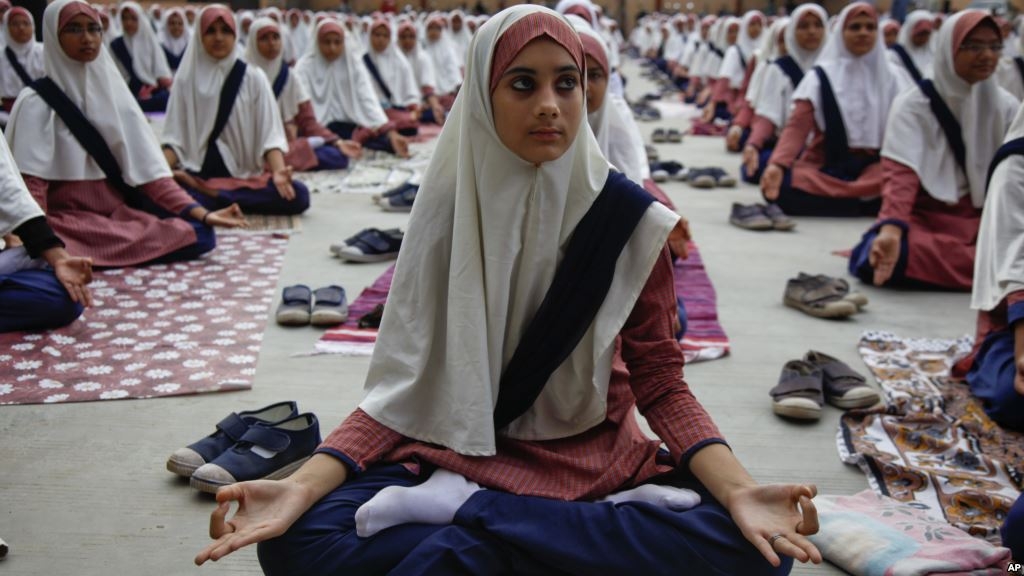
India is destined to fulfill a global mission of leading the strife-torn world and restive humanity on to the path of peace, brotherhood, progress and coexistence. The global response to India’s idea of celebrating International Day of Yoga is an indication of this eagerness of the global community to receive this Hindu thought. The sooner the Indians imbibe the traits of this Hindu spiritual and cultural nationalism the better for the world to increase its pace on the path of peace, progress and universal brotherhood.
